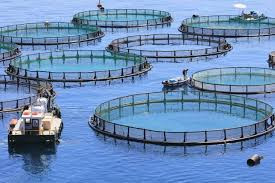CLIMATE
1) TROPICS
A tropical climate is a climate typically found within the Tropics, while a few locations outside the Tropics are considered to have a tropical climate.
The tropical climate is unlike the extra- tropics, where there are strong variations in day length and temperature, with season, tropical temperature remains relatively constant throughout the year and seasonal variations are dominated by precipitation.
The tropics is:
A tropical climate is a climate typically found within the Tropics, while a few locations outside the Tropics are considered to have a tropical climate.
The tropical climate is unlike the extra- tropics, where there are strong variations in day length and temperature, with season, tropical temperature remains relatively constant throughout the year and seasonal variations are dominated by precipitation.
The tropics is:
- High temperature
- a lot of rainfall
- many agriculture activities

Rubber tree

Coconuts
2) TEMPERATE

Temperate latitudes of Earth lie between the tropics and the polar regions.The temperatures in these regions are generally relatively moderate, rather than extremely hot or cold, and the changes between summer and winter are also usually moderate.
In certain areas, such as Asia and central North America, the variations between summer and winter can be extreme because these areas are far away from the sea, causing them to have a continental climate. Temperate is neither too warm nor too cold and also neither too wet nor too dry
Crops planted in spring, harvested in summer ( maize & wheat )

Vegetables continuously grown during winter in glass house

Large cattle reared for milk and beef performed best in the temperate region

Livestock farming is most suitable
3) TUNDRA
The tundra is a bleak and treeless place. It is cold through all months of the year Summer is a brief period od milder climates when the sun shine almost 24 hours a day. It has been called "the land of the midnight sun". Three types of tundra which artic tundra, antarctic tundra and alphine tundra.

Low temperature < 10 °C
The short summer lasts only 6 to 10 weeks. It never gets any warmer than 45 or 50 ° F. The warmer weather cause a layer of permafrost, ice that never goes away in the ground, to melt, creating bogs and shallow lakes that don't drain.
 |
| Long , clod dark winter (6-10 month) |
The tundra is freezing for almost all of the year with no traditional seasons, only a very long winter. Winter conditions in the tundra exist most of the year, with the exception of a very short mild season which passes for summer.
The type of vegetation that grows on the tundra are grass, shrubs of willow, sedges, and lichens. The vegetation grows very slowly because of the hard winter.
The animals in the tundra put on heavy coats to adaption to the harsh climate. Example of this adaption would be the coats on the caribou, reindeer, musk ox, arctic hare and the arctic fox.
4) DESERT
Desert climate also know as an arid climate is a climate that does not meet the criteria to be classified as a polar climate, and in which precipitation is too to sustain any vegetation at all or at most a very scanty shrub.
An are that features this climate usually experience less than 250 mm (10 inches) per year of precipitation and in some years may experience no precipitation at all. In some instances, an area may experience more than 250 mm of precipitation annually but is considered a desert climate because the region loses more water falls as precipitation. For example tucson, arizone Northern territory.
WATER

The agriculture activities such as rain-fed or irrigation. Irrigation is the artificial application of water to the land or soil. It is used to assist in the growing of agricultural crops, maintenance of landscapes, and revegetation of disturbed soils in dry areas and during periods of inadequate rainfall.
Irrigation also has a few other uses in crop production , which include protecting plants against frost suppressing weed growth in grain fields and preventing soil consolidation. In contrast, agriculture that relies only on direct rainfall is referred to as rain-fed or fry land farming. In Southern Peninsular Malaysia, the annual rainfall is more than 3000 mm, it is suitable for oil palm cultivation.
However, Kedah and Perlis region the annual rainfall is less than 2000 mm and it is more suitable for rubber and mangoes.
 |
| Rubber |
 |
| Mangoes |
Soil is an importance agriculture resource. From soil, plants obtain water and nutrients which ultimately are returned to the soil as indicated diagrammatically and briefly in the Nutrient Cycle.
- Rain water falls to the ground ia soaked up by the soil. Nutrient elements are dissolved in the water are taken up by plants.
- Water moves from the roots to be distributed throughout the plant and is then lost through the process of evapo-transpiration.
- As the plant grows, some parts like the leaves become senescent and drop to group and become part of soil as human and organic matter.

Nutrient Cycle
There are many types of soil based on factors of soil formation such as parent material, climate, topography, vegetations and time.

Soil types for Peninsular Malaysia (Main Range to Coastline) based on topography








































